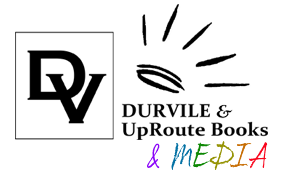INDIGENOUS JUSTICE: Rich Media
Listen to a Sample from the Audiobook
"Three short narratives," from Indigenous Justice
Performed by Lorene Shyba, Jules Hobson, and Rudy Kelly
---
An Excerpt from the Book
From the Introduction: Mindful of Culture and Tradition
By Lorene Shyba and Raymond Yakeleya
Indigenous Justice is written by legal and law enforcement professionals who share stories that provide perspective into their belief in the principles of reconciliation. How might these same principles extend into other important professions such as education, urban planning, and cultural industries such as fashion and art?
From the perspective of librarians and information professionals, Métis Nation citizen Colette Poitras says that the priority is to make sure that all community members can access the Truth and Reconciliation Commission’s (TRC) report and findings. In addition, she recommends that librarians purchase and provide books written by Indigenous authors and provide an inclusive space and programming opportunities that support Indigenous ways of knowing and being. Poitras facilitates Indigenous culture and history training and often hears that Canadians have missed out on learning the true history of Canada. Poitras says,
Learning about the First Peoples of this country make all people richer by knowing more about the land on which we live and the Indigenous ways of knowing and being. It creates dialog and an ongoing relationship which includes respect and reciprocity. It makes individuals and society more tolerant, inclusive and empathetic. The sacred values of love, respect, honesty, humility, truth, wisdom, and courage are values that make society strong. These are values that everyone benefits from and that can lead to true reconciliation.
Dr. Frank Deer, Kanienkeha’ka from Kahnawake and professor of Indigenous Education at the University of Manitoba, believes that to be supportive, university faculty leaders should consider how Indigenous knowledge might be used in their own academic areas of endeavour and commit to change for the benefit of students and communities. For instance, what do they believe they are actually doing when making a land acknowledgement? What does reconciliation mean to them? When asked how people might benefit from understanding Indigenous ways, he comes to the conclusion by saying, “Indigenous Peoples are an important part of Canada’s demographic, so coming to understand our experiences and identities will lend to the harmony within our social fabric.” Dr. Deer believes that there is an important journey in formulating a new relationship between Indigenous and non-Indigenous people, and it must include a sense of our shared history.
Bob Montgomery, citizen of the Métis Nation, is the Indigenous Engagement Coordinator at the Beaver Hills Biosphere, a UNESCO Biosphere Reserve east of Edmonton. Montgomery says, “Only now in the ten-year wake of Idle No More and eight years after the TRC is western science starting to publish papers that acknowledge the brilliance of Indigenous environmental consciousness that exists in our worldviews and languages.” When asked how the general public might benefit from his environmental work, he says, “It’s quite simple really, Indigenous Peoples have lived on this land for millennia and it is in everyone’s best interest to listen to them and follow their guidance on how to live harmoniously here.” As an analogy we might all be able to relate to, he adds,
You wouldn’t spend an evening at a friend’s house and immediately redesign the plumbing and the garden; there is knowledge already there of how things work in situ. Sometimes our communities are reluctant to share sacred or treasured information because of legacies of having their knowledge taken and sold for profit, never receiving any recognition or compensation. That is the legacy of colonialism. So if you are lucky enough to learn from Indigenous Peoples, follow their lead, make sure they are always included and compensate them and their communities fairly for the immense efforts they have made to keep that knowledge alive through all the violence they’ve endured.
Urban environments can also benefit by following the guidance of Indigenous Peoples. Crystal Many Fingers, Blackfoot academic and Indigenous landscape strategist for the City of Calgary, says, “When it comes to Indigenizing urban community space, there are levels of respect that must be addressed.” Many Fingers describes the first level as,
Engagement with all leadership of the Treaty Nations whose territorial land is under proposal. This engagement with leadership, Chief and Councils, may take time, but it is essential to work cooperatively with them to validate their support and respect their values. This must not be rushed, as is often the case under a colonial approach.
Secondly, she insists upon familiarity with the Assembly of First Nations (AFN) Principles of OCAP (ownership, control, access, and possession).
This means that First Nations control data collection processes in their communities and own, protect, and control how their information is used. Access to First Nations data is important and First Nations determine, under appropriate mandates and protocols, how access to external researchers is facilitated and respected.
When it comes to how the public can benefit from the implementation of Indigenous ways in city planning, Many Fingers expresses that, “The public needs to be given opportunities to learn about the rich history and ways of being of the land that they live and work on.”
In the significant field of arts and culture, beading artist Trudy Wesley from the Stoney Nakoda First Nation says this regarding non-Indigenous people wearing Indigenous fashion:
If people wear Indigenous beading or other fashion elements without understanding, it could be considered cultural appropriation. On the other hand, many Indigenous artists create clothing and other cultural items that are meant to be shared and enjoyed by all people. Non-Indigenous people should strive to be respectful and mindful of Indigenous cultures and traditions, and should try to learn about the cultural significance of any items they wish to wear.
Dene artist and author Antoine Mountain summarizes with this recommendation:
Strive to be a cultural ally, become familiar with Indigenous rights and ways of being. Be enchanted with and spiritually uplifted by Indigenous cultural content in the Arts.
